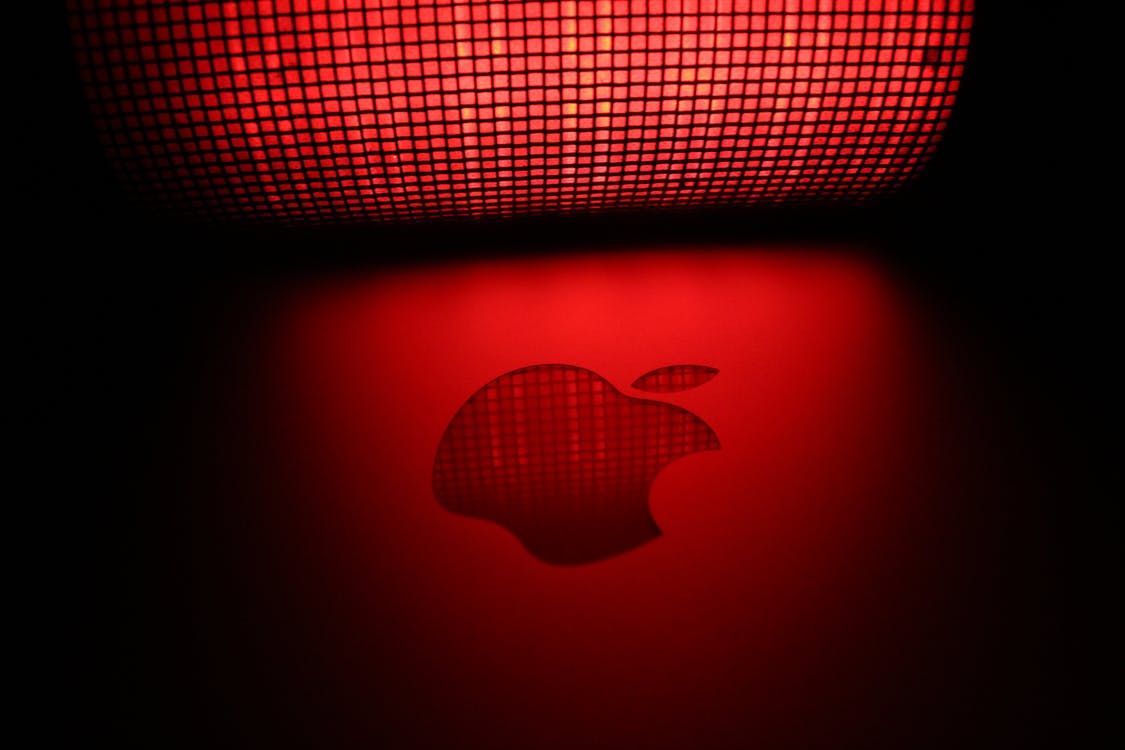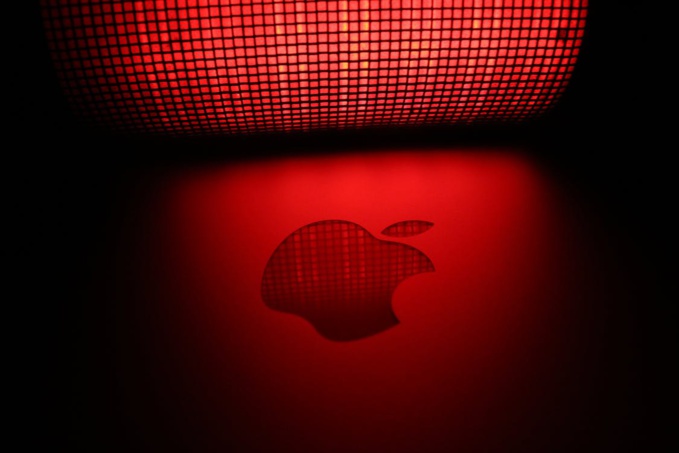Apple's quarterly report, published last week, left an ambiguous impression. For July-September 2018, the company reported revenue of $ 62.9 billion, which is 20% higher than a year earlier. Earnings per share are estimated at 41%.
Against the background of generally positive results, an unpleasant surprise was hidden in the breakdown of revenue by product. 0% in the graph of the increase in the number of sold iPhone showed that the company almost did not increase the supply of smartphones compared to last year. This did not affect the revenue from the iPhone that grew by 29% due to sales of new, more expensive models and cheaper production. However, how will this trend affect the company's business in the long term?
Every business works for profit in one way or another. But is it possible to unequivocally call a business effective if this profit is present and even grows? In the technology market, the answer to this question is not obvious. For example, Amazon did not receive net profit for the first 6 years in the status of a public company, but still was considered one of the most successful technology companies. By the way, Amazon’s profit in the last quarter turned out to be higher than expected, but the shares flew down amid a modest forecast for the pre-holiday quarter.
Therefore, the financial report of the company is important not so much by what has been done in the past, as by indicating the vector of development of the company and the market in which it operates. In the first 9 months of 2018, Apple sold 217.7 million iPhones, which is slightly more than 216.7 million in 2017 and 211.9 million in 2016. However, this is less than the 231.2 million iPhones sold during the same period of 2015. If you look at the picture wider, then the number of sold iPhone has been stagnating for three years.
Naturally, investors cannot ignore these statistics. Immediately after the announcement, Apple shares lost 6.6%. The company was ready for this turn of events: the financial director Luca Maestri announced that Apple would no longer disclose the breakdown of revenue by device.
The company already took similar measures in September 2016, when it announced that it would no longer disclose iPhone sales statistics for the first weekend after entering the market. These results, as a rule, brought Apple a lot of publications, and the refusal to publicly disclose them could only mean one thing: the time for records passed. The current decision meets the same objectives: less transparency means that Apple wants to reduce the degree of negativity and focus investors' attention not on how much the iPhone sells, but on how much revenue it makes. This, in turn, is an alarm bell for those who base their predictions on Apple primarily on the device segment. The market has already responded with stinging remarks that now companies "have something to hide."
It is possible that in the current pre-holiday quarter, Apple will still be able to break its own records with the latest iPhone Xs, Xs Max and Xr. The new devices were launched only at the end of September-October, and some users traditionally refrain from buying an iPhone before the release of new devices. However, the iPhone 6, which set the record, also entered the market only at the end of September 2014, so there is no “extra time” factor.
The difference is in the market conditions in which sales are going. According to analysts from IDC, the trend towards a decline in global smartphone sales continues. In July-September 2018, only 355.2 million smartphones were supplied to the market - 6% less than a year earlier. Smartphone sales have been falling for the fourth quarter in a row, and against this background, the ability to sell at least as many iPhones as last year can be regarded as a definite achievement.
However, it is much more interesting to look at the breakdown of sales by manufacturers. The leader among suppliers, Samsung, sold 13.4% less smartphones than a year earlier, and reduced its market share from 22.1% to 20.3%. While the launch of the Galaxy Note 9 was successful in the premium segment, Samsung is losing ground in the middle and lower price segment. Plans to rework the product portfolio and introduce new features into other models can potentially help the company overcome these difficulties.
At the same time, the top Chinese manufacturers, who are not yet competing with the same Apple in the $ 1000 + segment for a smartphone, are successfully going against the stream. Huawei increased shipments by 32.9% and consolidated in second place.
How does Apple plan to respond to the negative market trend, in addition to hiding the statistics of devices sold? Firstly, by increasing the marginality of the iPhone, which helped it maintain its revenue growth in this segment. The company is gradually reorienting the strategy from the mass-market to the luxury segment, where the numerical result of sales is not as important as the ability to convince the buyer to pay a premium price for a new device. This is confirmed by a breakdown by geography: sales are growing in more solvent regions (USA and Europe), but they are stagnating or declining in China and developing countries.
The average price of iPhones sold for the quarter was about $ 800, and in the pre-holiday quarter it could go as high as $ 1,000, considering the prices of new models. This result is still unattainable for competitors of Apple from among the majority of Chinese manufacturers. And in this sense, the refusal to disclose the breakdown by the number of devices sold is clear: the basic functions of Apple smartphones can be found in cheaper devices of competitors, but a closed ecosystem and the strength of the brand are its advantage.
The second response is a focus on the services segment. If you can’t sell more iPhones, then you can earn more on post-sales - this is another one of the tenets of Apple’s new strategy. In the reporting quarter, revenues from services grew by 17% to a record $ 10 billion, that is, more than a quarter of iPhone revenue. It is logical that now Apple will break the results in reports only for two articles: devices and services.
Finally, Apple earns points from investors in the dividend and share repurchase program. During the reporting quarter, the company returned $ 23 billion to investors, bringing the capital return program to nearly $ 90 billion in the fiscal year.
The company's efforts do not remain fruitless. Apple this year was the first company in the United States with an estimated capitalization of over $ 1 trillion. However, whether Apple will be able to stay at this point after the December quarter is still unknown. The forecast for revenues for October-December at $ 89-93 billion was lower than analysts' forecasts.
In any case, Apple’s January report will be the focus of market attention. New items in the iPad and Mac lines may positively affect the general segment of devices, although here the company unpleasantly surprised the market with high prices for the updated MacBook Air. However, the current report has become another signal of the transformation of the technology industry, which the Wired edition describes as follows: “Farewell, the desire to change the world; hello, earnings on it."
source: forbes.com
Against the background of generally positive results, an unpleasant surprise was hidden in the breakdown of revenue by product. 0% in the graph of the increase in the number of sold iPhone showed that the company almost did not increase the supply of smartphones compared to last year. This did not affect the revenue from the iPhone that grew by 29% due to sales of new, more expensive models and cheaper production. However, how will this trend affect the company's business in the long term?
Every business works for profit in one way or another. But is it possible to unequivocally call a business effective if this profit is present and even grows? In the technology market, the answer to this question is not obvious. For example, Amazon did not receive net profit for the first 6 years in the status of a public company, but still was considered one of the most successful technology companies. By the way, Amazon’s profit in the last quarter turned out to be higher than expected, but the shares flew down amid a modest forecast for the pre-holiday quarter.
Therefore, the financial report of the company is important not so much by what has been done in the past, as by indicating the vector of development of the company and the market in which it operates. In the first 9 months of 2018, Apple sold 217.7 million iPhones, which is slightly more than 216.7 million in 2017 and 211.9 million in 2016. However, this is less than the 231.2 million iPhones sold during the same period of 2015. If you look at the picture wider, then the number of sold iPhone has been stagnating for three years.
Naturally, investors cannot ignore these statistics. Immediately after the announcement, Apple shares lost 6.6%. The company was ready for this turn of events: the financial director Luca Maestri announced that Apple would no longer disclose the breakdown of revenue by device.
The company already took similar measures in September 2016, when it announced that it would no longer disclose iPhone sales statistics for the first weekend after entering the market. These results, as a rule, brought Apple a lot of publications, and the refusal to publicly disclose them could only mean one thing: the time for records passed. The current decision meets the same objectives: less transparency means that Apple wants to reduce the degree of negativity and focus investors' attention not on how much the iPhone sells, but on how much revenue it makes. This, in turn, is an alarm bell for those who base their predictions on Apple primarily on the device segment. The market has already responded with stinging remarks that now companies "have something to hide."
It is possible that in the current pre-holiday quarter, Apple will still be able to break its own records with the latest iPhone Xs, Xs Max and Xr. The new devices were launched only at the end of September-October, and some users traditionally refrain from buying an iPhone before the release of new devices. However, the iPhone 6, which set the record, also entered the market only at the end of September 2014, so there is no “extra time” factor.
The difference is in the market conditions in which sales are going. According to analysts from IDC, the trend towards a decline in global smartphone sales continues. In July-September 2018, only 355.2 million smartphones were supplied to the market - 6% less than a year earlier. Smartphone sales have been falling for the fourth quarter in a row, and against this background, the ability to sell at least as many iPhones as last year can be regarded as a definite achievement.
However, it is much more interesting to look at the breakdown of sales by manufacturers. The leader among suppliers, Samsung, sold 13.4% less smartphones than a year earlier, and reduced its market share from 22.1% to 20.3%. While the launch of the Galaxy Note 9 was successful in the premium segment, Samsung is losing ground in the middle and lower price segment. Plans to rework the product portfolio and introduce new features into other models can potentially help the company overcome these difficulties.
At the same time, the top Chinese manufacturers, who are not yet competing with the same Apple in the $ 1000 + segment for a smartphone, are successfully going against the stream. Huawei increased shipments by 32.9% and consolidated in second place.
How does Apple plan to respond to the negative market trend, in addition to hiding the statistics of devices sold? Firstly, by increasing the marginality of the iPhone, which helped it maintain its revenue growth in this segment. The company is gradually reorienting the strategy from the mass-market to the luxury segment, where the numerical result of sales is not as important as the ability to convince the buyer to pay a premium price for a new device. This is confirmed by a breakdown by geography: sales are growing in more solvent regions (USA and Europe), but they are stagnating or declining in China and developing countries.
The average price of iPhones sold for the quarter was about $ 800, and in the pre-holiday quarter it could go as high as $ 1,000, considering the prices of new models. This result is still unattainable for competitors of Apple from among the majority of Chinese manufacturers. And in this sense, the refusal to disclose the breakdown by the number of devices sold is clear: the basic functions of Apple smartphones can be found in cheaper devices of competitors, but a closed ecosystem and the strength of the brand are its advantage.
The second response is a focus on the services segment. If you can’t sell more iPhones, then you can earn more on post-sales - this is another one of the tenets of Apple’s new strategy. In the reporting quarter, revenues from services grew by 17% to a record $ 10 billion, that is, more than a quarter of iPhone revenue. It is logical that now Apple will break the results in reports only for two articles: devices and services.
Finally, Apple earns points from investors in the dividend and share repurchase program. During the reporting quarter, the company returned $ 23 billion to investors, bringing the capital return program to nearly $ 90 billion in the fiscal year.
The company's efforts do not remain fruitless. Apple this year was the first company in the United States with an estimated capitalization of over $ 1 trillion. However, whether Apple will be able to stay at this point after the December quarter is still unknown. The forecast for revenues for October-December at $ 89-93 billion was lower than analysts' forecasts.
In any case, Apple’s January report will be the focus of market attention. New items in the iPad and Mac lines may positively affect the general segment of devices, although here the company unpleasantly surprised the market with high prices for the updated MacBook Air. However, the current report has become another signal of the transformation of the technology industry, which the Wired edition describes as follows: “Farewell, the desire to change the world; hello, earnings on it."
source: forbes.com



















